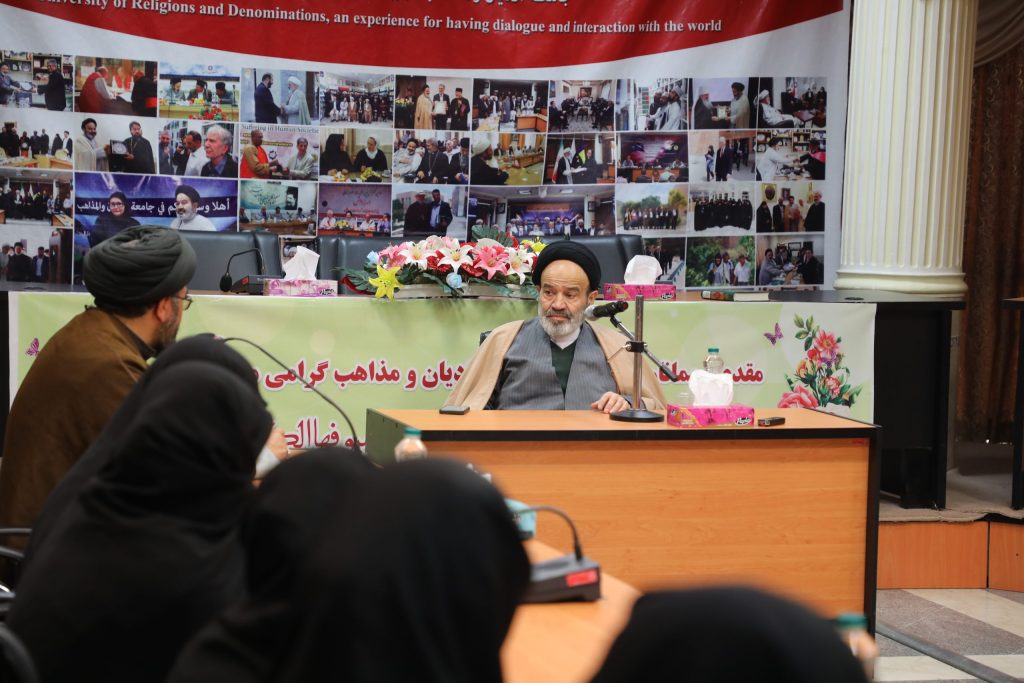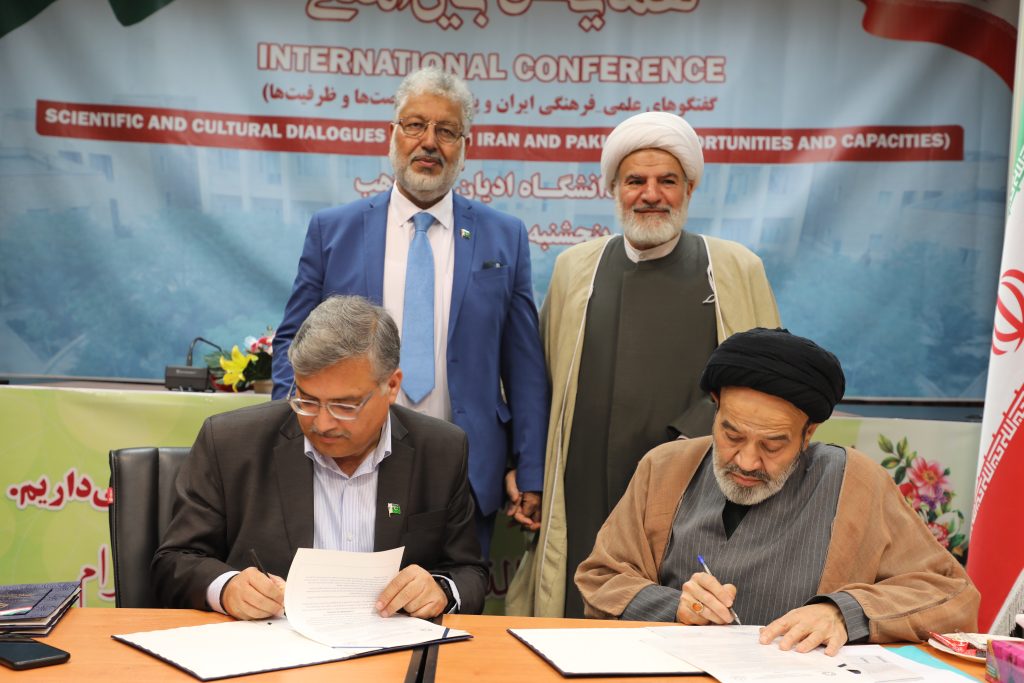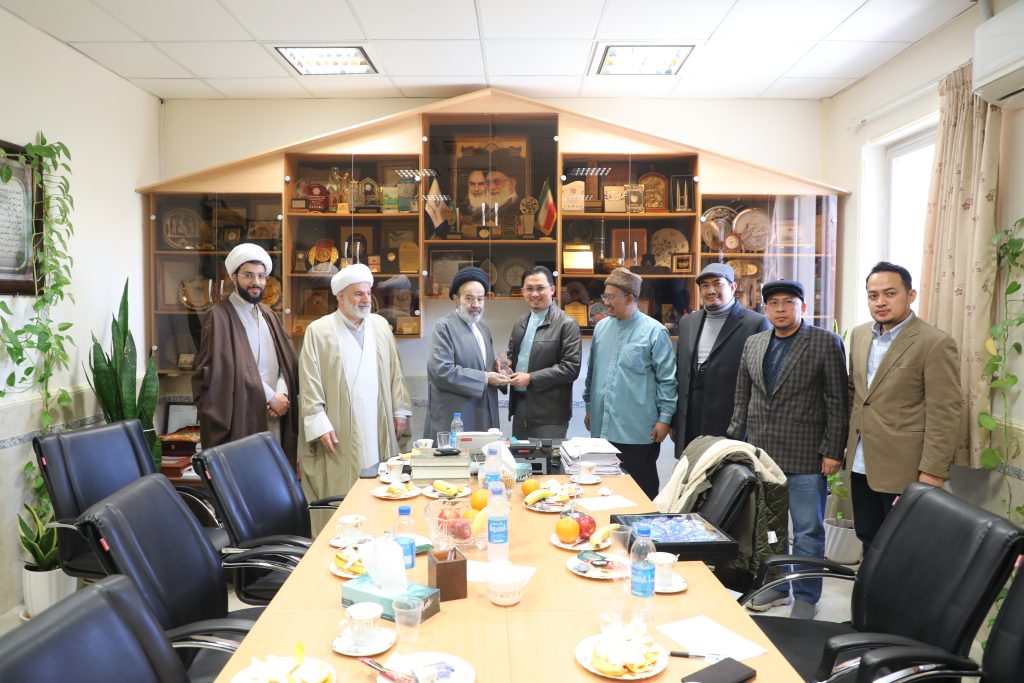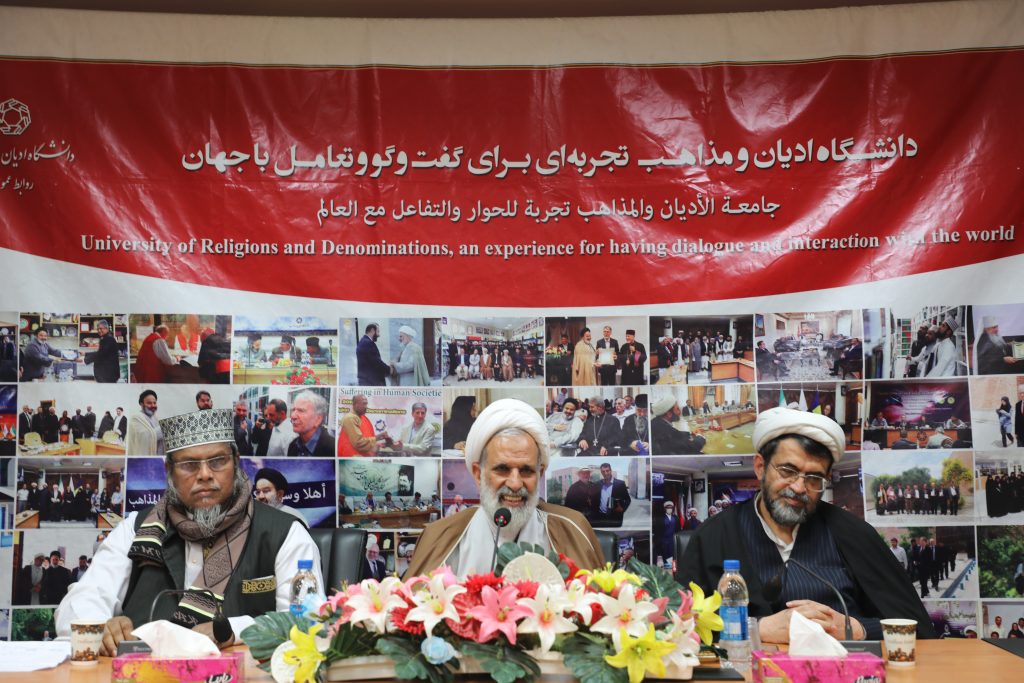Vatican Ambassador in Tehran Appreciates URD-Published Persian

The Persian translation of the book ‘Catechism of the Catholic Church’ was unveiled in Tehran in presence of the ambassador of Vatican.
In a ceremony held on Tuesday, January 27, at the institute of Shahr-e-Ketab (Persian: Book City) the Persian translation of the book ‘Catechism of the Catholic Church’ was unveiled in Tehran.
In addition to Mr. Boccardi, the head the University of Religions and Denominations(URD), Abul Hassan Navvab; translators of the book Ahmad Reza Meftah, Hossein Soleimani and Hassan Qanbari; a number of other experts and enthusiasts also attended the meeting.

The Persian translation of ‘Catechism of the Catholic Church’ which has recently been printed and released by URD Press is a source of the Catholic Church for teaching the principles of belief, religious and ethical rituals in Christianity.
The book is indeed the official text of the Catholic Church which relies on the Holy Bible, the tradition of this church, theorists of the Catholic Church.
One of the features of the book is its resemblance in terms of format to some books published in the Shiite tradition.
The book was translated into Persian during 12 years by three scholars of Iran’s University of Religions and Denominations, a teaching and research center focusing on the study of religions and Islamic sects.
It is a book of instruction containing formal principles of the Catholic Church in the fields of ideological, social and moral issues as well as prayers. It is to appear in the Italian book stores soon.
The original text was written upon an order by Pope John Paul II who was the Pope of the Catholic Church from 16 October 1978 until his death on 2 April 2005. The book was confirmed by more than a thousand bishops.

H.E. Archbishop Leo Boccardi, Vatican Ambassador to the Islamic Republic of Iran in his lecture at the ceremony highly appreciated the University of Religions and Denominations for their fine translation of the book ‘Catechism of the Catholic Church’.
Here is the lecture:
Salam
1. I am very grateful to the organizers of this event for their kind invitation to attend the presentation of the Catechism of the Catholic Church translated into Farsi that has seen the light of day since a few months.
2. I renew my appreciation to all those who are responsible for this great initiative of publication, which is a credit to the University of Religions and Denominations at Qom, to the translators, and it enriches the vast Iranian editorial presentation with another important work.
3. On 12 January, the translation was officially presented at the Pontifical Gregorian University in Rome, by the officials of the Pontifical Council for Interreligious Dialogue, the Rector of the University, the Ambassador of the Islamic Republic of Iran to the Holy See, before a large audience of experts and scholars.
4. To what has been already said by many distinguished scholars on that occasion, what can I add in my capacity as Apostolic Nuncio (Vatican Ambassador) to the Islamic Republic of Iran?
5. I would like to begin by praising the hard work of the translators of this book who have really made a huge effort to complete successfully this endeavour, after twelve years of intense work and dedication. It is an accurate and precise venture, which fully respected, not only grammar but the proper character of the book, and I assure you that it is not a simple thing. It is said that the translator is a traitor because very often, a book translated is no longer the same that which came from the author. But in this case, I can attest that the principles and concepts of Catholic theology are translated with precision, in letter and spirit, and there is no need of further corrections. If we were in a school, I would have given marks ten out of ten with honours to the translators and to the publisher and editor of the book which is elegant, easy to read and also comparatively cheap in its price.
6. What to do with this book? Is it to exhibit in the book-shelf of the library? No, it would be mortifying so much of effort! It is a valuable book of reference, study, dialogue, understanding, and those who speak about religion must study it well. Just few days ago, the Great Leader of the Islamic Revolution Ayatollah Ali Khamenei urged the youth of the world to learn about Islam. I too would like to invite young Iranians to learn about Catholicism and in order to do this, you must read this book. Today a lot is said about dialogue, as something which is very necessary among the religions. Well, the precondition of dialogue is mutual knowledge. I cannot have a dialogue with whom I do not know
. This translation offers an extraordinary opportunity to the religious, to teachers, students- Muslims and Christians- to learn about the Christian faith and overcome recurring prejudices that often offend human reason, since they are superficial, vague or erroneous. This translation allows a qualitative leap in Islam-Catholic relations and promotes a closer dialogue between Iran and the Holy See.
7. My first visit outside Tehran as Nuncio was to the University of Religions and Denominations at Qom to submit the presentation to this volume by Cardinal Tauran, President of the Pontifical Council for Interreligious Dialogue. I can therefore say that I began my service as Nuncio exactly in relation with this work and for the presentation of which I have given my modest contribution. The translation of this book, as I said early, has lasted for twelve years. The important things cannot be improvised. They require hard work, perseverance, commitment and a great idea! I would like to honor everyone who contributed to realize this work.
8. Perhaps someone will ask: was it worthy this translation, if Catholics in Iran are a few thousands? I answer: It will definitely serve the few Christians who speak the Farsi language but above all, for more than hundred million people worldwide whose mother tongue is Farsi, it will help them to learn about the faith of the Catholic Church. We have to remember that dialogue is not between religions, but among the followers of religions. The biggest obstacles to dialogue, to mutual understanding and to mutual respect are ignorance and prejudice. This book helps to fight both, the ignorance as well as prejudice.
How the thoughts of Aristotle and Plato came to be known in Europe? How in the Middle Ages we have known the Greek philosophy? How St. Thomas Aquinas could conceive his Summa Theology? Thanks to the translation of the great Greek philosophers accomplished by Arab scholars in Spain. The King Alfonso X established in Toledo, the most important school of translation in the world of that time of Arabic and ancient Greek into Latin. Today, it is easy for us, because when we just click on the internet we find that most of the works have already been translated. The translators of the Middle Ages contributed to the european civilization. Civilization is knowledge and dialogue that allows mutual respect and acceptance of diversity. Our world today is multi-religious, multi-ethnic and multi-cultural. It is therefore necessary to educate oneself to the globality and to come out of narrow vision of our own small world, because the world is vaster than our horizon.
The Catechism
What is a catechism? The word catechism comes from Greek “kateχéo” which means “to teach orally”. It is a summary or exposition of the doctrine and it serves as a learning introduction to the 7 Sacraments traditionally used in the catechesis or Christian religious teaching of children and also adults often in the form of questions and answers. All the process of the Christian education or formation is based on 4 elements: the catechism, the catechist, the catechumen and the catechesis. It is important to note that the catechist is not necessarily a priest but also a layperson with catechetical training who engages in such teaching.
The Catechism of the Catholic Church is the official catechism of the Catholic Church but is not the only one that we have. One of the most important was the Roman Catechism or called the Catechism of the Council of Trento of the 1566 intended not for common use laity but as a general book reference for priests and bishops. One other famous catechism was the one of Pope Pio X, the one I studied, at the beginning of the last century in Italian. One other was the Baltimore Catechism in use in the United States as a school text until 1960. After the Vatican Council was published the famous Dutch Catechism which was the first comprehensive catechism after the council a very best seller in a way adapted to the understanding and the thinking of the present days.
After there is the United States Catholic Catechism for Adults published in 2006 after the Catechism of the Catholic Church as an authentic reference text for teaching Catholic doctrine and especially for preparing local catechisms.
Another important text is the Catechism for Filipino Catholics published in a inculturated way for Filipino peoples.
The fact that we have different catechisms it means that we have different truth or catholic beliefs in different cultural context of different countries? What it is true in Italy is different from what it is in Germany or in Africa? The Faith is something relative? Certainly not! But it is important to accede to different cultures and acculturate the message in the particular historic and cultural context.
The comprehension of the Holy Revelation (Holy Scripture) and of the Church itself is not for all. The Second Vatican Council celebrated 50 years ago represents this new way of understanding when Pope John XXIII requested an “aggiornamento” of the Church, not a new doctrine but a new language and a new approach to the doctrine.
After the conclusion of the Vatican Council in 1965, twenty years later, were published what we can call the “last documents” of the Council, the Code of Canon Law on 25 January 1983 and the Catechism of the Catholic Church in 1992. These two important documents describe and define the life of the Christians in two aspects: what is the rule and what are the laws of all the components of the Church in that society that is the Church? What Christians must believe and what they have in common in their act of faith? Orthodoxy and orthopraxis, the doctrine and the moral.
The Catechism is arranged in 4 different parts:
The Profession of Faith= the Creed
The Celebrations of the Christian Mystery = the liturgy and sacraments
The life of Christ= the Ten Commandments
The Christians Prayers
In conclusion, I would like to end with the words of Card. Joseph Ratzinger: “After the fall of ideologies, the problem of man—the moral problem—is presented to today’s context in a totally new way: What should we do? How does life become just? What can give us and the whole world a future which is worth living? Since the catechism treats these questions, it is a book which interests many people, far beyond purely theological or ecclesial circles”.
Thank you very much for your attention and once again my congratulations to the translators and editor of the book.
+ Leo Boccardi
Vatican Ambassador to the Islamic Republic of Iran
Also earlier on January 12, ‘Catechism of the Catholic Church’ was discussed at a meeting in Pontifical Gregorian University of Rome in the presence of Vatican representatives and Iranian experts.
Iran’s Ambassador to Vatican Mohammad Taher Rabbani was present in the unveiling ceremony along with a number of Vatican scholars.
Addressing the ceremony, Rabbani said the book was translated into Persian with an aim to strengthen friendship between Muslims and Christians.
He said the Persian text of the book is dedicated to followers of Christianity, Pope Francis in particular.
Another speaker at the ceremony was Cardinal Jean-Louis Pierre Tauran, president of the Pontifical Council for Interreligious Dialogue in the Roman Curia.
The Cardinal said initiatives like publishing the Persian translation of the ‘Catechism of the Catholic Church’ will help Christians and Muslims find a better understanding from each other and avoid unfounded judgments, especially after the recent terrorist attacks in Paris which left 12 people dead.
It is hard to understand the present world without religion, Cardinal Tauran stressed.




